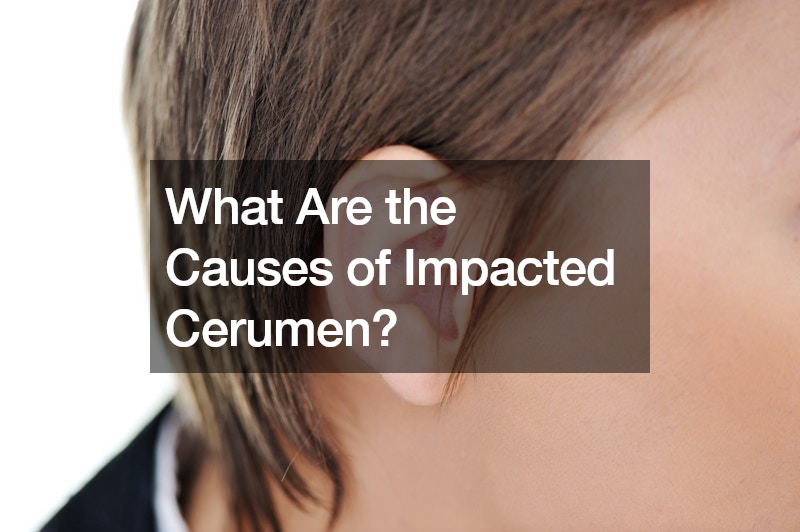
Impacted cerumen, commonly known as earwax blockage, occurs when earwax accumulates in the ear canal to the point that it causes symptoms such as pain, hearing loss, or discomfort. Understanding the causes of impacted cerumen can help in preventing and managing this common issue. Here, we explore the primary causes of impacted cerumen and how they contribute to this condition.
Overproduction of Earwax
One of the main causes of impacted cerumen is the overproduction of earwax. Earwax, or cerumen, is produced by glands in the ear canal to protect and lubricate the ear. It traps dust, debris, and microorganisms, preventing them from reaching the eardrum. However, some individuals produce more earwax than necessary, leading to an accumulation that can become impacted. This overproduction can be influenced by genetics, skin conditions like eczema, or inflammation within the ear canal.
Improper Ear Cleaning
Improper ear cleaning practices are a significant cause of impacted cerumen. Many people use cotton swabs, bobby pins, or other objects to clean their ears. Instead of removing earwax, these objects often push the wax deeper into the ear canal, causing a blockage. The ear is a self-cleaning organ, and the use of such objects disrupts its natural process. Additionally, using ear candles, a popular alternative remedy, can also lead to wax impaction and even ear injury.
Narrow or Abnormally Shaped Ear Canals
The shape and size of the ear canal can also play a role in the causes of impacted cerumen. Individuals with narrow or abnormally shaped ear canals are more prone to earwax impaction. In such cases, even a normal amount of earwax can accumulate and cause blockage because it has a harder time moving out of the ear naturally. Conditions like bony growths (exostoses) in the ear canal can also impede the natural movement of earwax.
Use of Hearing Aids and Earplugs
The frequent use of hearing aids, earplugs, or in-ear headphones can contribute to the causes of impacted cerumen. These devices can prevent earwax from naturally migrating out of the ear canal and can push the wax deeper, leading to impaction. Additionally, wearing these devices for extended periods creates a warm, moist environment that can stimulate earwax production and make it more likely to become impacted.
Aging
Aging is another factor in the causes of impacted cerumen. As people age, the consistency of their earwax changes, often becoming harder and drier. This can make it more difficult for the earwax to move out of the ear canal naturally. Additionally, older adults may have decreased production of cerumen, but the earwax they do produce is more likely to become impacted due to the harder consistency.
Skin Conditions and Infections
Certain skin conditions and infections can also lead to impacted cerumen. Conditions like eczema, psoriasis, and dermatitis can cause excessive earwax production or alter the consistency of the earwax, making it more likely to become impacted. Ear infections, particularly chronic ones, can lead to inflammation and swelling in the ear canal, disrupting the natural movement of earwax and causing it to build up.
Anatomical Variations and Injuries
Anatomical variations and injuries to the ear canal are additional causes of impacted cerumen. Any structural abnormalities or previous injuries that alter the normal shape and function of the ear canal can interfere with the natural process of earwax removal. Scar tissue from surgeries or injuries can create obstacles that trap earwax, leading to impaction.
Understanding the causes of impacted cerumen is crucial for effective prevention and management. Overproduction of earwax, improper ear cleaning, anatomical factors, use of hearing devices, aging, skin conditions, and ear infections all contribute to this common condition. By recognizing these causes, individuals can take steps to maintain their health and seek appropriate treatment when necessary. Proper ear care, avoiding invasive cleaning methods, and consulting with healthcare professionals for persistent issues can help prevent and manage impacted cerumen effectively.
.




